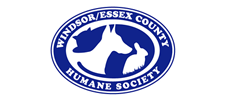Session G: Disasters and Domestication: Exploring Multispecies Resiliency
Sub-theme
Research and Theory
Keywords
Disaster, Vulnerability, Resiliency, Japan
Start Date
12-10-2018 4:30 PM
End Date
12-10-2018 5:45 PM
Abstract
Given our reliance and affective attachment with non-human others, our vulnerabilities and resiliencies are deeply intertwined. This is made most apparent during a disaster. According to Oliver-Smith (2002), “Vulnerability is a concept that allows us to bring nature in from ‘out there’ and facilitates reconceptualizing nature-society relations from a duality to a mutuality” (42). In this paper I focus on the mutuality between humans and domesticated species, outlining how vulnerabilities are co-produced by our bonds with, and reliance on animal others. Domesticated animals are some of the most vulnerable of living beings in a disaster, as they often rely on humans for basic needs and are rarely included in disaster policy. Thus, so, too, are the guardians, friends, and families of these non-human others. Based on 12 months of multispecies ethnographic fieldwork with animal rescue non-profit organizations who assisted in the 2011 Fukushima evacuation and aftermath, I delineate the significance of building resiliency for both humans and domestic animals via disaster preparedness.
Session G: Disasters and Domestication: Exploring Multispecies Resiliency
Given our reliance and affective attachment with non-human others, our vulnerabilities and resiliencies are deeply intertwined. This is made most apparent during a disaster. According to Oliver-Smith (2002), “Vulnerability is a concept that allows us to bring nature in from ‘out there’ and facilitates reconceptualizing nature-society relations from a duality to a mutuality” (42). In this paper I focus on the mutuality between humans and domesticated species, outlining how vulnerabilities are co-produced by our bonds with, and reliance on animal others. Domesticated animals are some of the most vulnerable of living beings in a disaster, as they often rely on humans for basic needs and are rarely included in disaster policy. Thus, so, too, are the guardians, friends, and families of these non-human others. Based on 12 months of multispecies ethnographic fieldwork with animal rescue non-profit organizations who assisted in the 2011 Fukushima evacuation and aftermath, I delineate the significance of building resiliency for both humans and domestic animals via disaster preparedness.




